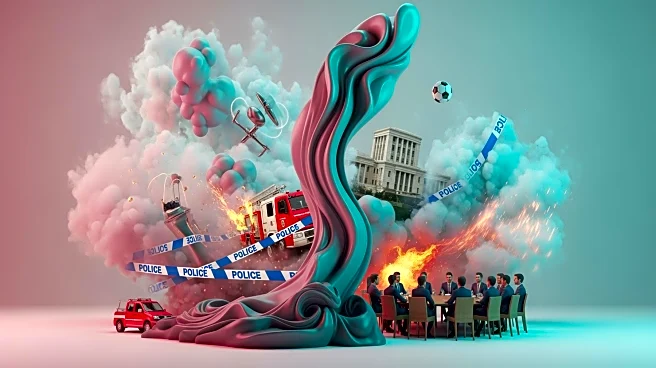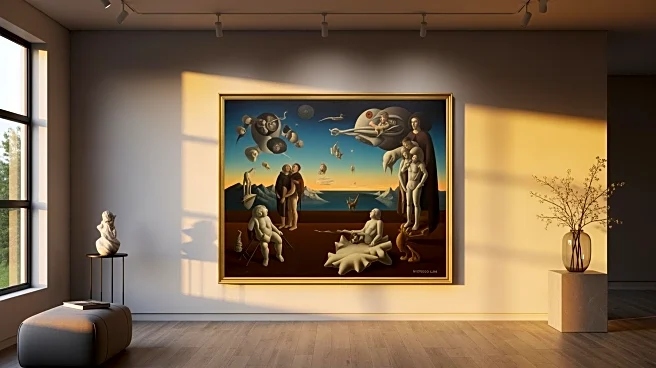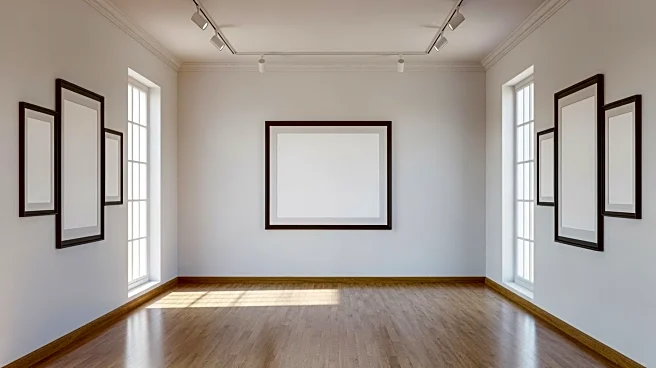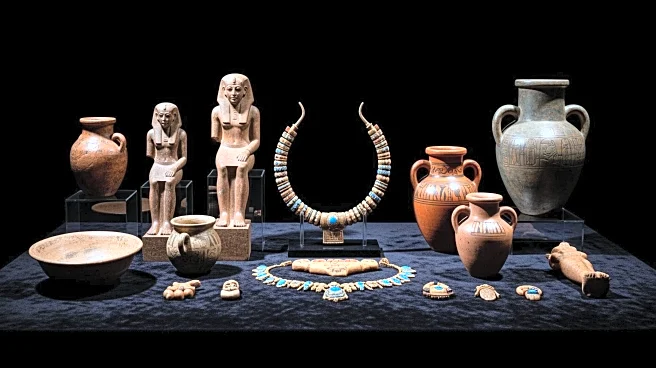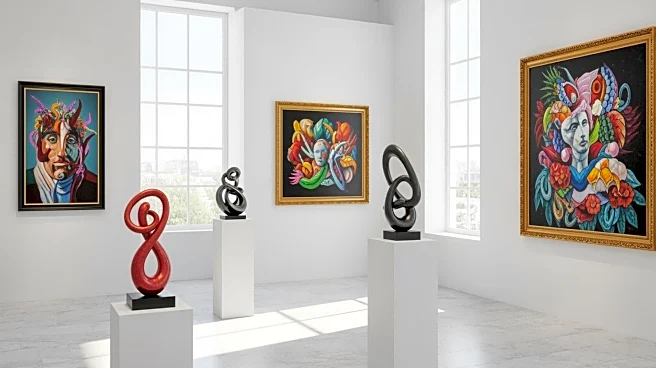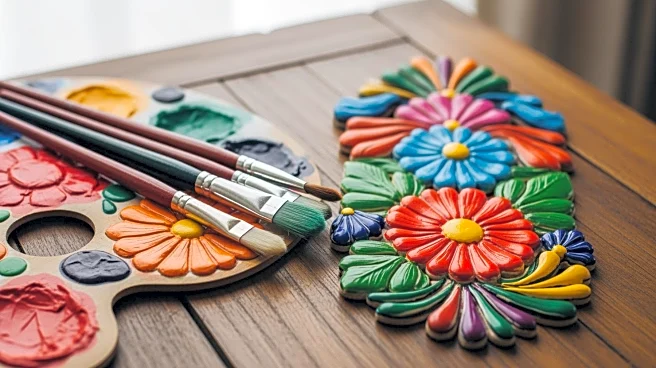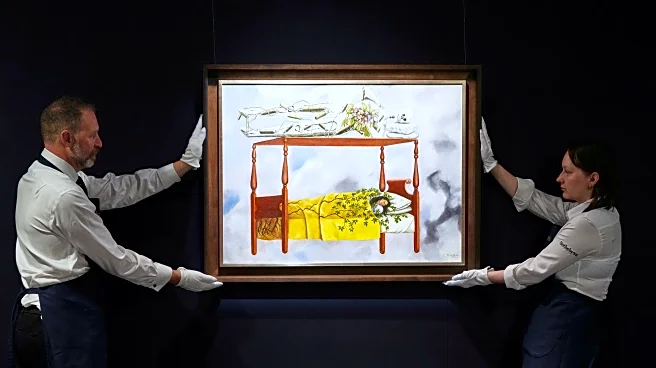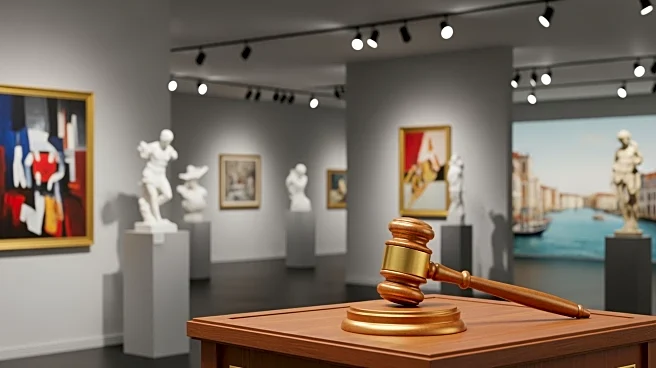What's Happening?
The Museum of Modern Art (MoMA) in New York is showcasing a retrospective of Wifredo Lam, a prominent yet often misunderstood Surrealist artist. The exhibition features Lam's iconic works, including 'La
jungla' and 'Grande Composition,' which highlight his unique style and cultural influences. Lam's art, characterized by elongated figures and hybrid forms, reflects his Afro-Cuban heritage and themes of decolonization. The retrospective aims to shed light on Lam's contributions to Surrealism and his collaborations with poet Aimé Césaire, emphasizing the cultural and historical contexts of his work.
Why It's Important?
This retrospective is significant as it re-evaluates Lam's impact on Surrealism and his role in decolonizing art. By highlighting Lam's Afro-Cuban heritage and the cultural symbolism in his work, MoMA is contributing to a broader understanding of Surrealism beyond its European roots. The exhibition challenges previous interpretations of Lam's art, offering a more nuanced view that acknowledges the influence of Afro-Cuban traditions. This could lead to a reassessment of Lam's place in art history and inspire further exploration of multicultural influences in Surrealism.
Beyond the Headlines
The exhibition also explores Lam's relationship with Surrealist thinkers and his role in the Négritude movement, which sought to reclaim African cultural identity. By foregrounding Lam's collaborations with Aimé Césaire, MoMA is highlighting the intersection of art and political activism. This retrospective may prompt discussions on the ethical dimensions of art interpretation and the importance of recognizing diverse cultural narratives in art history.
